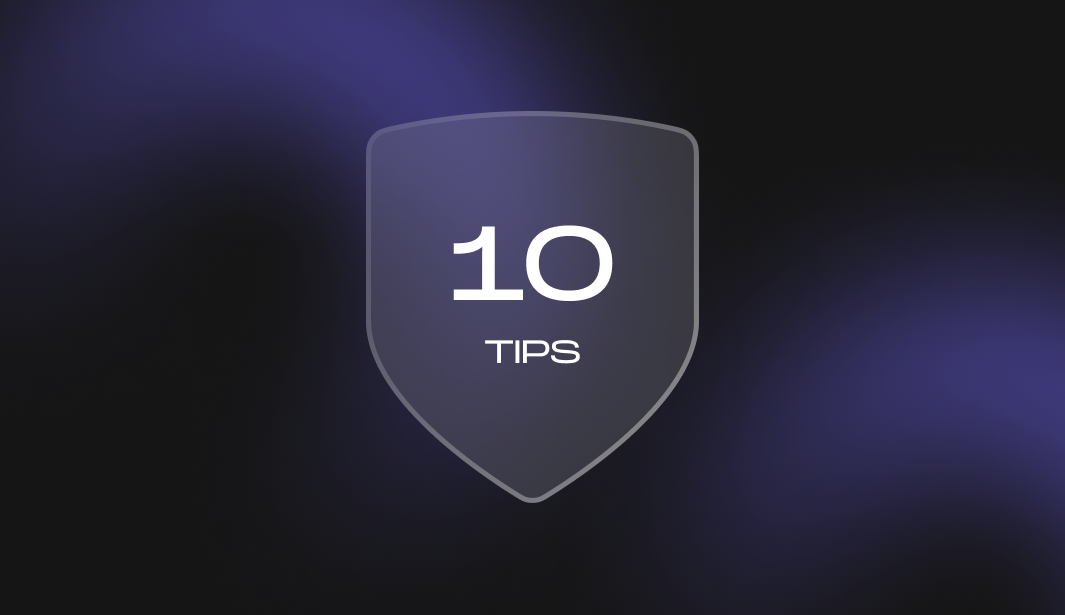Email marketing is an environment where new challenges constantly arise. Therefore, it is essential for email marketers to learn best practices and insights from colleagues to make their work more effective. In addition, these practices differ depending on the type of business — B2B or B2C, SaaS-project or eCommerce.
Today, we asked Emily McGuire, email marketing consultant and senior email marketer, how to make B2B email marketing personalized, what communication problems arise in teams and how to solve them, and why GenAI is still a long way from making the job of an email marketer much more effortless.
Emily McGuire is a seasoned email marketer who builds and retains customer relationships at scale. With lessons learned from thousands of emails and crafting multi-million-dollar email campaigns, Emily loves sharing both her mistakes and her strategies for email marketing done well.
Interview Expert

What is important to understand about email marketing in B2B?
Stripo: You hold the position of Senior Email Marketer at Close. Your company’s product is a CRM system that helps your customers sell more efficiently by unifying their outreach, engagement, and automation. Tell us a little about the main features of email campaigns for such a business.
Emily: The beauty of this tool is being able to understand your customer journey from lead to loyal and tailoring your messaging accordingly. That means developing campaigns that speak to leads based on how warm they are — no matter if they’re cold, warm, or hot. Pair that with the visibility of other communication touches like calls and SMS, and you can see how your leads are being nurtured when they need a follow-up, as well as which tactics are working best.
S: What metrics do you consider most important to track the effectiveness of email marketing in B2B? What do you personally measure most often?
E: In B2B, the sales cycle is longer, which makes it hard to track the success of only one email. It’s one blip in a lengthy communication process. That makes attribution of conversions challenging — especially if you have a sales motion providing a high-touch experience. Email marketing is a nurturing tool that warms leads and then passes them to your sales team or website for a conversion — whether a trial, a contract, or other nurturing content.
I track big conversions like free trials or paid customers, as well as micro-conversions like viewing high-intent pages or leads passed to sales.
What helps me to estimate the effectiveness of email campaigns:
- I use email metrics like opens, clicks, and unsubscribes to track the health of my email lists;
- internal benchmarking based on the lifecycle stage also helps me watch for wide fluctuations in engagement. This tells me that either people aren’t interested in a particular campaign or have data quality issues.
About personalization and increasing engagement in emails
S: We understand that you are a fan of personalized email campaigns. What benefits does email personalization bring to businesses and their email marketing strategies? What advice would you give to email marketers who are deciding to take the path of personalizing their email campaigns?
E: I personalize email content and CTAs based on the lifecycle stage:
- Leads need more information and nurturing. They haven’t tried our product yet, so they need to be directed to more value-based information about our product. Plus, I’m ultimately going to nurture them to become a customer.
- For active customers, this isn’t the case. I want to focus my messaging and their content on things that will help them use our product better.
- If they’ve churned, I’m going to treat them more like a lead. They need to be nurtured back.
For me, email personalization isn’t as much about dynamic content (which has its place). It’s more about making sure I’m tailoring my messaging, content, and CTAs to nurture them to the next phase in their customer journey.
S: In one of your interviews, you recommend asking direct questions and show that customers’ answers are valuable for increasing engagement. What functionality in emails do you think is practical — survey forms directly in emails, Google forms, or something else?
E: Surveys are a great way to collect feedback. Sometimes, asking for a reply is a great way to start a conversation. Ultimately, if you can hop on a call with a few customers or listen to sales calls, you’re going to get messaging gold for future use in your campaigns.
How to use GenAI in email marketing
S: Based on your experience developing email marketing strategies for eCommerce, how do you see the role of artificial intelligence and machine learning in creating email campaigns? Which roles can be safely entrusted to GenAI, and which ones definitely cannot?
E: I use GenAI as a brainstorming tool. It’s not going to fit the structure or tone that I have found to be personable and engaging.
Most businesses do not have those resources. Yes, some tools can help you with that, but those tools still need to be managed by a human who understands the complexities of your ideal customers, messaging/positioning, and your data. And most databases are incredibly messy to rely on AI/ML to do the data work they’d like.
What I have found is that ChatGPT is a great tool for documentation and reporting. If I’m trying to condense a ton of information to get internal alignment and am having a hard time constructing a blurb, I turn to ChatGPT to help me tighten up my ideas. Getting my strategy’s or project’s purpose across in a few sentences is critical to getting stakeholders on the same page without relentless back-and-forth questions.
S: You write that you love chatting about what it means to be human (because no one is perfect despite all efforts to the contrary). How do you assess whether AI technology could displace humanity from email marketing? And how important is the “humanity pixel” for successful email campaigns?
E: GenAI regurgitates the breadth of internet content back to us. It generalizes content and human experience. In my experience with marketing, if you’re able to tailor your copywriting to specific audiences and human experiences, you make a connection that drives people to take action.
GenAI can get you part of the way there, but it still takes a human to understand the complexities of your organizational goals, your goals, and your audience’s goals to bring your campaigns together.
How to make email marketing teams work better
S: Based on your email marketing consulting practice at Flourish & Grit, what would you say are the three hot spots for growth in email marketing that help brands improve the results of their email campaigns?
E: That requires digging into the different conversion points your audience needs to take to become customers, stay customers, and return when they’ve churned.
From there, you can develop different email programs that nurture your subscribers across their entire journey. But again, that requires knowing who’s the right fit for your brand, what value you provide, and how your product or service fits into the competitive landscape.
S: What problems in collaboration between teams on email campaigns do you have to solve most often in your work? Or perhaps you see them during your consulting activities with your clients?
E: Collaboration is probably the most underrated skill in marketing. To get help with your campaigns, you need alignment and buy-in. When you’re in the weeds with your work, it’s tough to take a step back and explain it to someone who isn’t living it and breathing it daily.
They need to know why you’re doing what you’re doing, how it impacts business goals, and what you require from them. You have to be able to do that directly and efficiently. That’s MUCH easier said than done.
To make it easier to collaborate in a remote environment, I do such steps:
- I create a campaign brief for every email I send out;
- I include a summary of what’s happening, why, and all the resources and details I need to execute that campaign;
- if it’s something outside of business as usual, I’m looping in someone who I haven’t worked with before on that type of project, and I will create a Loom video walking through what I’m trying to do and what I need from them.
It makes it SO MUCH easier to collaborate in a remote environment.
S: In your opinion, what are these problems most often associated with — errors in processes, communication, documentation, or failure to use collaboration tools for email marketing?
E: These problems can slow down the production of your campaigns or sideline them if people don’t understand the WHY or what you need from them. You have to help people understand why they should prioritize your request. Part of that is making it easy for them to help you — which means being very clear about what you need from them.
Wrapping up
Here are some insights for email marketing consultancy and best practices we took from this interview:
- B2B email marketing is a tool that generates leads and then passes them on to your sales team or your website for conversion — whether that’s a trial, a contract, or other valuable content;
- it’s critical to personalize your email content and calls to action based on your lifecycle stage;
- GenAI is suitable as a brainstorming tool but still requires significant resources to use correctly. You still need to combine all the details of what you are trying to achieve and explain it to the GenAI to achieve the desired results;
- collaboration is one of the most underrated skills in marketing. Miscommunication between team members can slow down the development of your campaigns or push them into the background.
We are grateful to Emily McGuire for the interview, where we discussed important topics for the email marketing industry.









0 comments